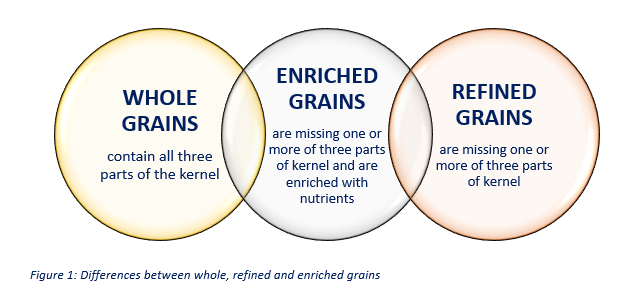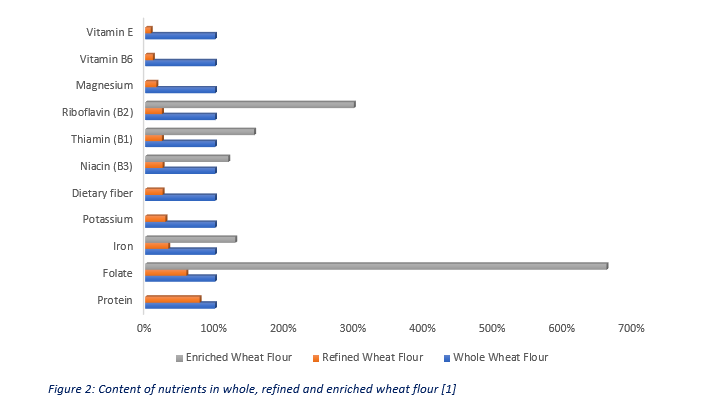Why is better to choose WHOLE GRAINS over REFINED or ENRICHED GRAINS?
Whole grains contain all three parts of the kernel (bran, endosperm and germ) which are rich in dietary fiber and micronutrients [1]. They also contain B vitamins, minerals (magnesium, zinc, iron and phosphorus) and other bioactive compounds (antioxidants) [2]. Refined grains are grains which are not whole, because they are missing one or more of these three key parts of the kernel [1]. In 19th century the invention of industrialized roller mills changed the way of processing grains. New milling process removes the bran and gran and leaves only endosperm intact. This gives grains a finer texture and improves their shelf life but strips the grains of important nutrients. The endosperm which is left after milling has unfortunately a lot of carbohydrates and small amount of nutrients [3].
The consumption of refined grains quickly led to widespread nutrition problems as deficiency diseases beriberi (disease caused by vitamin B1 deficiency) and pellagra (disease caused by vitamin B3 deficiency). Therefore, many governments required or recommended that refined grains need to be “enriched”. Those grains are called enriched grains. Enrichment adds back some of the nutrients which were removed in the milling process but in different proportions than they originally existed in whole grains.
So there is only one rational decision – CHOOSE WHOLE GRAINS!

The figure below compares whole wheat flour to refined wheat flour and enriched wheat flour. You can clearly see the difference in essential nutrients in whole, refined and enriched wheat flour.

References:
1. Whole Grains Council official website
2. AACC International (2012b) American Association of Cereal Chemists, Whole Grains from a Mechanistic View..
3. Harvard T. H. Chan official website